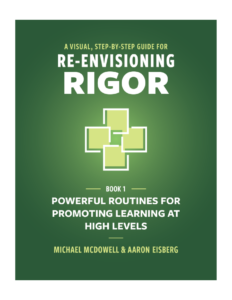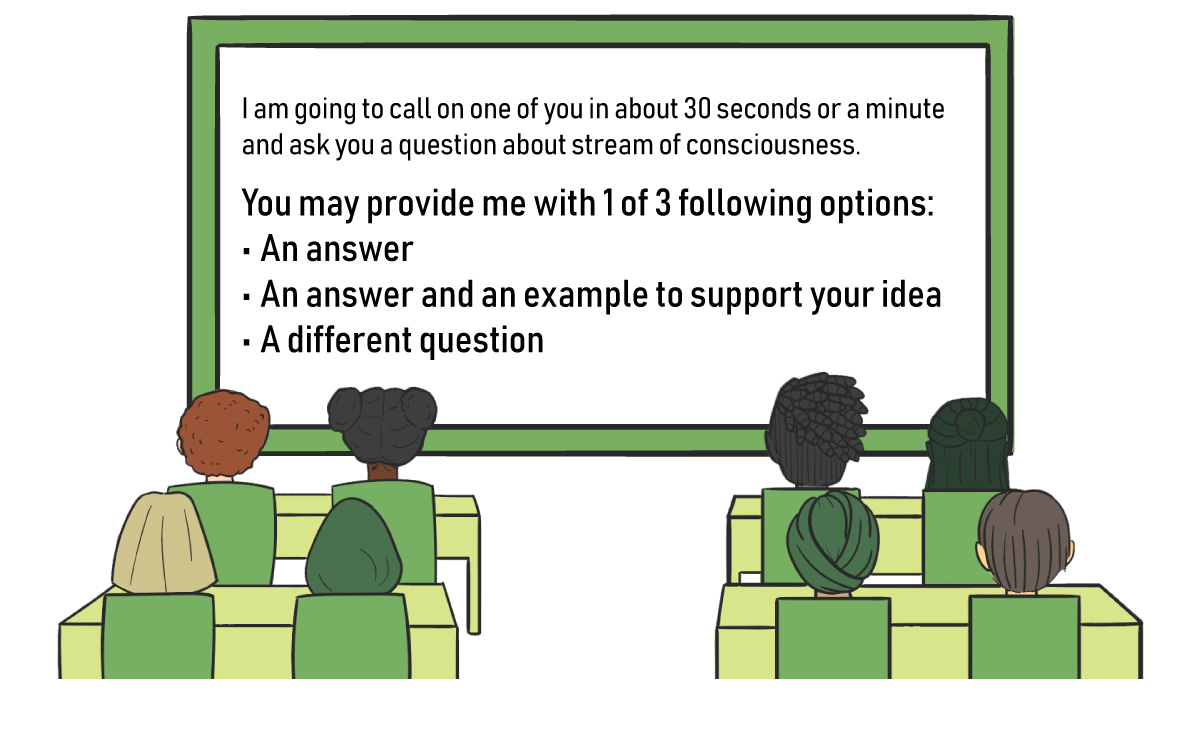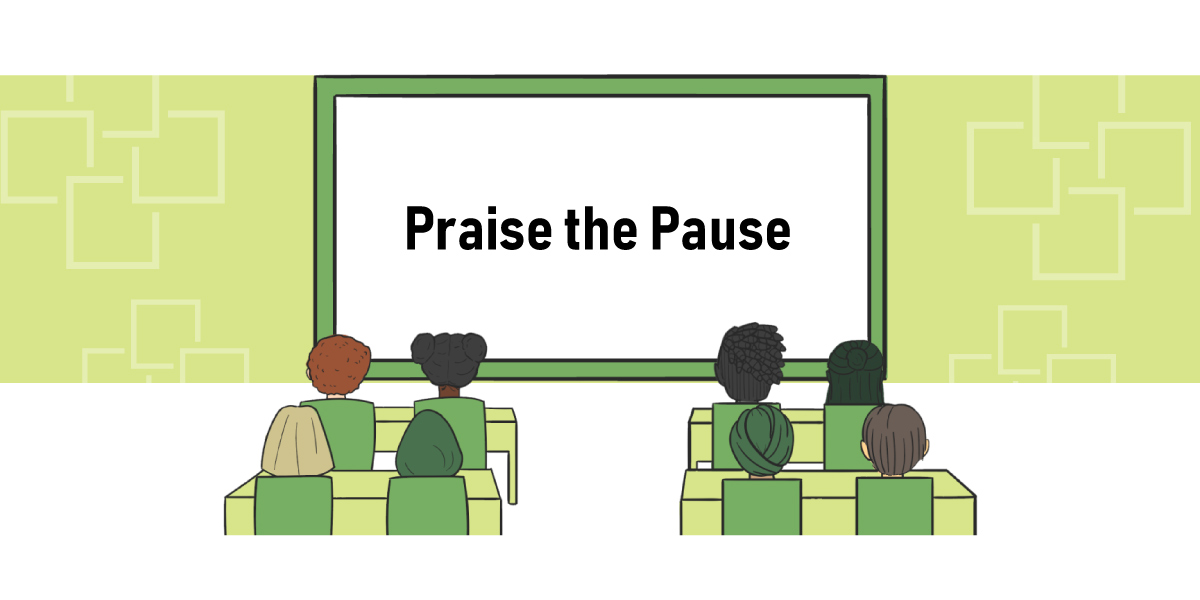By Virginia Condon, English Teacher & Instructional Coach at Lyons Township High School
As we express our gratitude, we must never forget that the highest appreciation is not to utter words, but to live by them. – John F. Kennedy
 Last spring Michael McDowell introduced me to a few short and seemingly simplistic instructional strategies intended to engage students and move them from surface to deep to transfer learning. At that time, I did not realize how transformative these strategies would be, but now I find myself in awe at the immediate and visible impact they have had in my classroom. I am sincerely grateful to Michael and Aaron, the authors of A Visual, Step-By-Step Guide for Re-Envisioning Rigor: Powerful Routines for Promoting Learning at High Levels, for allowing me to enhance my professional practice by implementing “Praise the Pause.”
Last spring Michael McDowell introduced me to a few short and seemingly simplistic instructional strategies intended to engage students and move them from surface to deep to transfer learning. At that time, I did not realize how transformative these strategies would be, but now I find myself in awe at the immediate and visible impact they have had in my classroom. I am sincerely grateful to Michael and Aaron, the authors of A Visual, Step-By-Step Guide for Re-Envisioning Rigor: Powerful Routines for Promoting Learning at High Levels, for allowing me to enhance my professional practice by implementing “Praise the Pause.”
Despite my original impression, “Praise the Pause” is not another name for “Wait Time.” “Praise the Pause” provokes critical thinking and accountability by giving students a choice of how to respond to a question and the time necessary to craft an individual response. There are three self-differentiated options for responding — providing an answer to the question, providing an answer with an example, or asking a question. The strategy can be used at any time during the lesson and can engage students in transfer learning more quickly.
I frequently use this strategy in my AP® English Literature & Composition class at Lyons Township High School. Most recently, when working with stream-of-consciousness writing with our study of Virginia Woolf’s book To the Lighthouse, I created a slide for students that read:

I am going to call on one of you in about 30 seconds or a minute and ask you a question about stream of consciousness.
You may provide me with 1 of 3 following options:
An answer
An answer and an example to support your idea
A different question
After their think time, I first called on Anne:
“Anne? What can you tell me about the writing style, stream-of-consciousness?”
Anne, squirming a little in her seat, uncomfortably replied, “I can’t remember.”
I told Anne, “Okay, but I am going to come back to you after the class gives us some more information. Jose? What can you tell me about this writing style?”
Jose spouted out: “Stream of consciousness is when you write down exactly what you are thinking.”
“Tom, can you build on Jose’s response?”
Tom offered, “Well, Virginia Woolf used this writing style to try to express the inner workings or thoughts in the minds of her characters.”
Now, it was time to check back in with Anne, “Anne, can you add to the conversation?”
Anne had been paying attention and decided to use the third response option. She asked, “Why did Virginia Woolf feel the need to write this way and are there any current authors that use this writing style?”
Yes! In a few moments, students defined stream of consciousness (surface knowledge), explained how it was used by Virginia Woolf (deep learning), and began a conversation about modern-day authors who use this writing style (transfer learning).
The guaranteed time to think allowed students to develop a response before the question was even asked, minimizing the anxiety and dread that can occur when being caught off guard. Pausing even enabled a student who was first unable to respond to make a meaningful contribution to the class discussion.
I have used this frequently over the past month at various points in the class period and have watched students who are normally quiet and unlikely to volunteer an answer, offer some of the most insightful commentary. Additionally, I have used this strategy to review reading assignments and I have had students lead “Praise the Pause.”
“Praise the Pause” has been a worthwhile addition to my classroom and my repertoire of instructional strategies, ensuring students slow down, think deeply, and develop meaningful thoughts to share with their classmates.
Thank you to Michael and Aaron for visualizing 24 more routines and strategies in their recent book, A Visual, Step-By-Step Guide for Re-Envisioning Rigor: Powerful Routines for Promoting Learning at High Levels.



